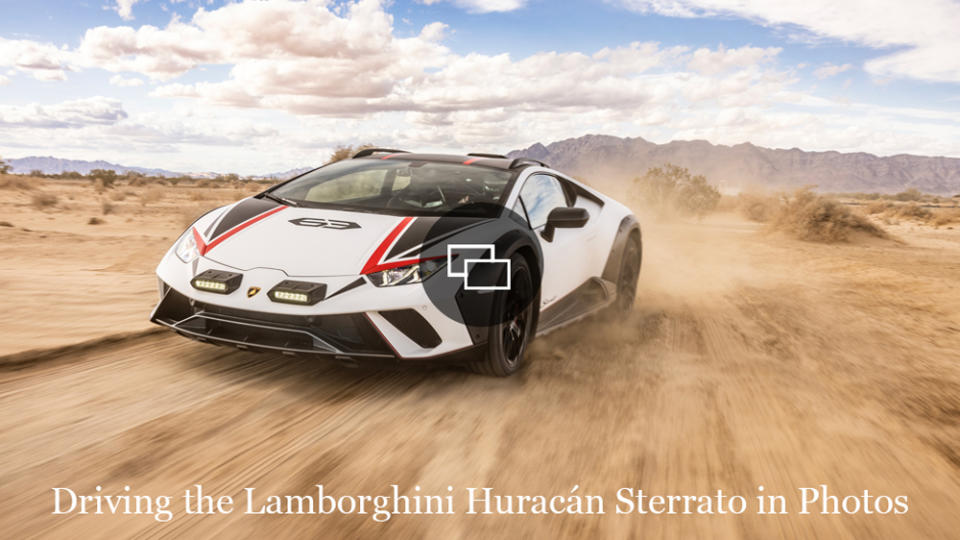First Drive: The Lamborghini Huracán Sterrato Takes on the Track and Dirt With Equal Poise
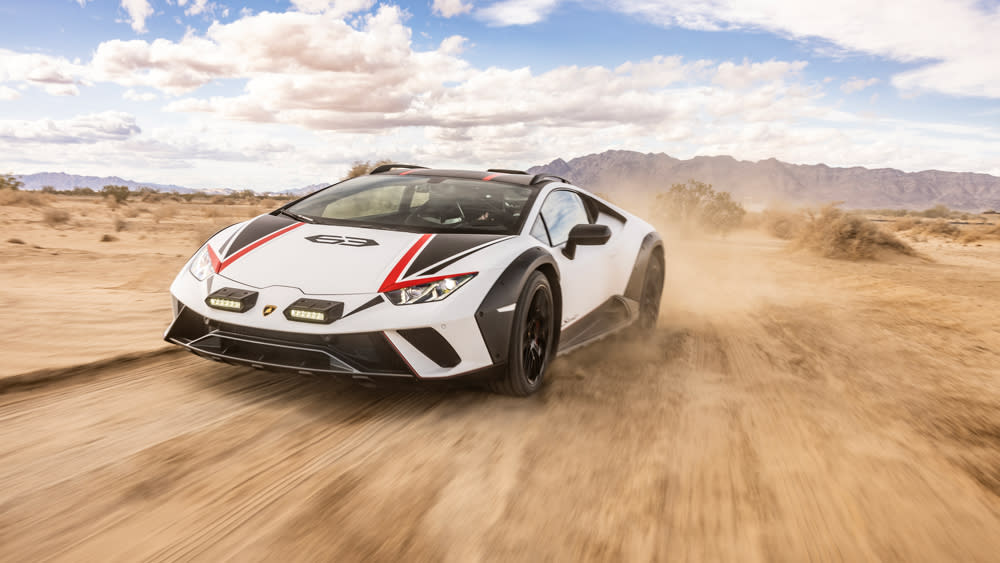
I’m halfway through my first lap at Chuckwalla Valley Raceway—in Desert Center, Calif.—when my copilot, a professional racer, points toward the outside edge of a left-hand turn. “Now switch to Rally driving mode and go between those two white cones as you continue to follow the course,” I’m told. What makes me mentally question these instructions is that the two white cones delineate the border between pavement and desert sand. The urge to disregard the directive is strong, but I remind myself that I’m in the new Lamborghini Huracán Sterrato.
On pavement, the supercar feels every bit as capable as previous versions of the Huracán—the 602 hp, mid-mounted V-10 engine effortlessly launching the car out of low-speed corners. And Lamborghini touts the Sterrato’s ability to cover zero to 60 mph in 3.4 seconds, while its carbon-ceramic brakes confidently haul the 3,300-pound coupe down from triple-digit speeds. Yet so far, there’s nothing about the Sterrato’s driving dynamics that suggests it can—or should—be driven off road.
More from Robb Report
We Drove 8 of Lamborghini's Most Important Cars in a Single Day. Here's What We Learned.
This Stunning 1989 Lamborghini Countach Is Up for Auction, but Time Is Ticking
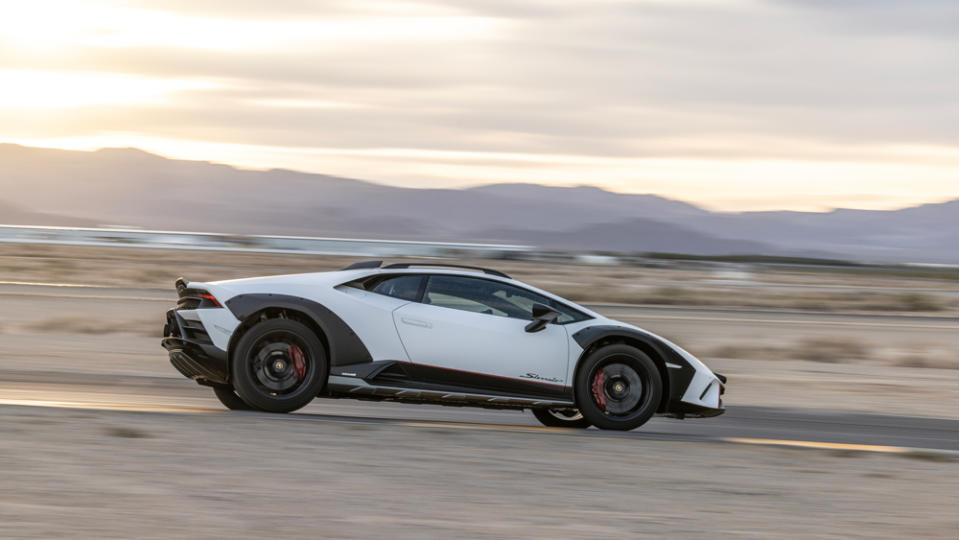
I tell myself that Lamborghini wouldn’t have set up an off-road course if it was going to damage this low-slung exotic car. The front tires leave the pavement and a cacophony of sand and rock collisions begins to echo through the cabin. These sounds are accompanied by the rise and fall of the V-10’s burly exhaust note as I drift the Sterrato through a series of serpentine turns carved in the mushy sand between Chuckwalla’s paved race circuit. Within minutes, my sense of apprehension has been replaced by unmitigated exhilaration.
Rotating and sliding the Sterrato over desert sand proves a revelation on multiple levels. First, there’s the realization that Lamborghini can engineer a sports car to accomplish such feats of off-road proficiency. Second, there’s undeniable driver enjoyment to be found in utilizing a Huracán for this kind of all-terrain action. Finally, there’s the epiphany in recognizing the minimal hit to on-road performance the Sterrato suffers in exchange for its off-road prowess. In fact, the improvements in everything from overall ride quality to absorbing potholes might suggest that this variant is the most appealing version of the Huracán for anything short of paved track use.
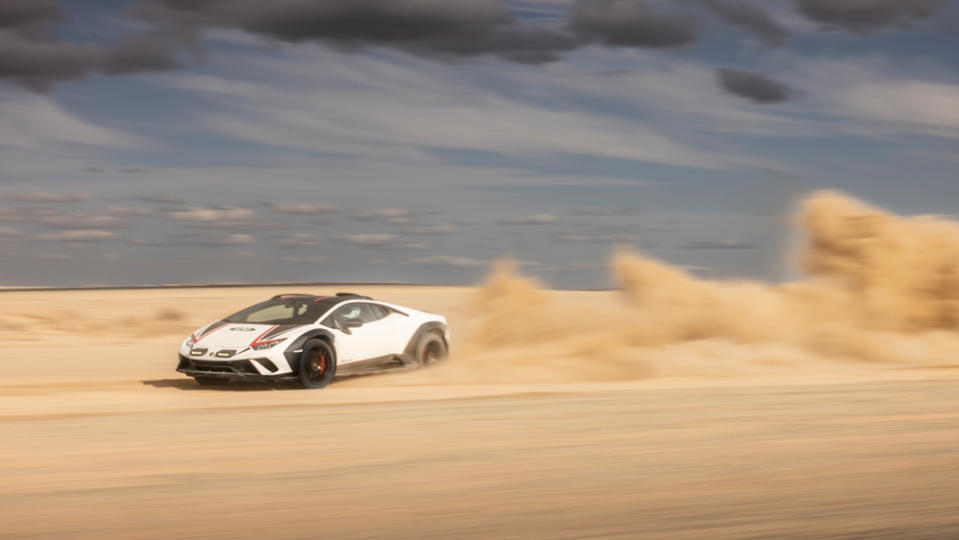
Lamborghini accomplished this impressive mix of on- and off-road performance through a series of engineering tweaks to the standard Huracán model. These include a 1.7-inch increase in ground clearance, a front and rear track that’s been widened by over an inch, and a .3-inch-longer wheelbase. These dimension shifts are accompanied by wider wheel arches, aluminum underbody panels for added protection, and Bridgestone Dueler off-road tires sized 235/40-19 in front and 285/40-19 in back. The tires feature run-flat technology that provides 50 miles of travel at zero PSI, but the real engineering coup is reflected in their ability to deliver excellent grip despite changes in terrain.
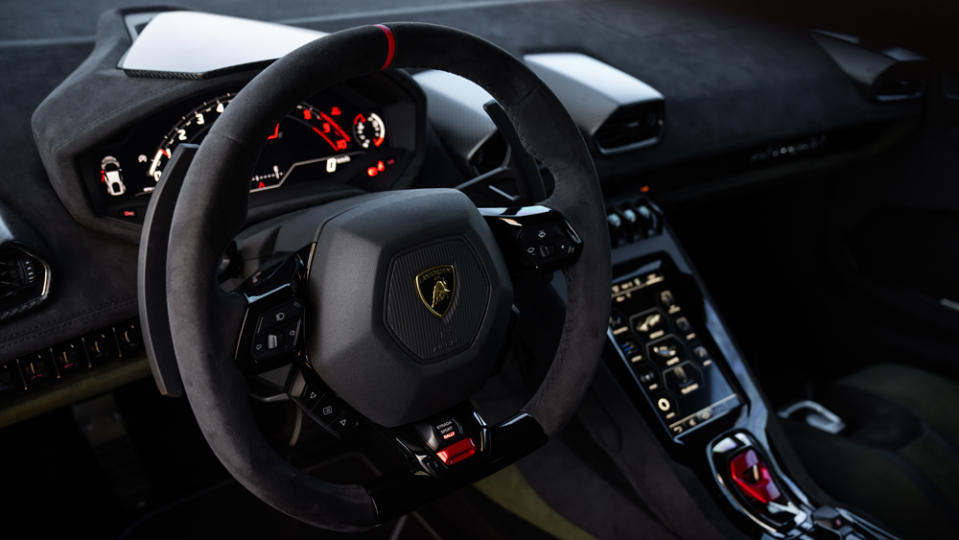
I experienced such versatile traction during several laps around the course, which was roughly 70 percent dirt. Using the Sterrato’s aforementioned Rally mode (first seen on the Lamborghini Urus Performante) improves the vehicle’s all-wheel-drive power delivery in off-road conditions. It also lets the Sterrato kick its tail out under aggressive acceleration, allowing drivers to drift through the sand-laden corners while retaining a reduced level of electronic stability control to avoid spinning.
If leveraging the marque’s engineering expertise to create a rally version of the Huracán sounds like a questionable use of resources, well, I get that. I thought so too. Until I drove the Sterrato. The constant grin I wore during high jinks in the dirt had me sold on the vehicle for that reason alone. But I then covered 100 miles on some of Southern California’s best canyon roads—all paved—where the car maintained the confidence and poise I’ve experienced in the EVO, STO, and Tecnica siblings in the Huracán family.
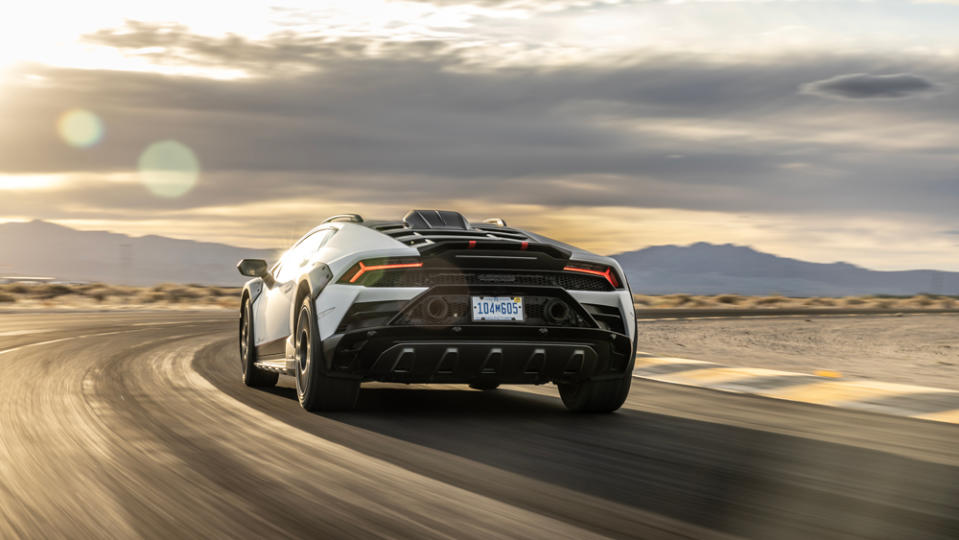
Yes, the Sterrato’s suspension has more travel and is tuned a bit softer, which translates to increased body roll. But that simply results in a smoother, more controlled ride when traveling over road imperfections, and less concern when approaching steep driveways or other abrupt transitions. With a higher center of gravity than other Huracáns, and a top speed of 162 mph (about 25 mph less than the more track-inspired STO), there are undeniable compromises to maximum performance. But outside of a track environment, Sterrato drivers will be hard pressed to identity those sacrifices, while constantly reminded of the car’s more refined ride and improved ground clearance.
Production of the Lamborghini Huracán Sterrato is already underway, with a total of 1,499 examples planned. Of those, about 35 percent—or 525—will be assigned to the U.S. market, each starting at approximately $260,000.
Click here for more photos of the Lamborghini Huracán Sterrato in action.
Best of Robb Report
Sign up for Robb Report's Newsletter. For the latest news, follow us on Facebook, Twitter, and Instagram.
